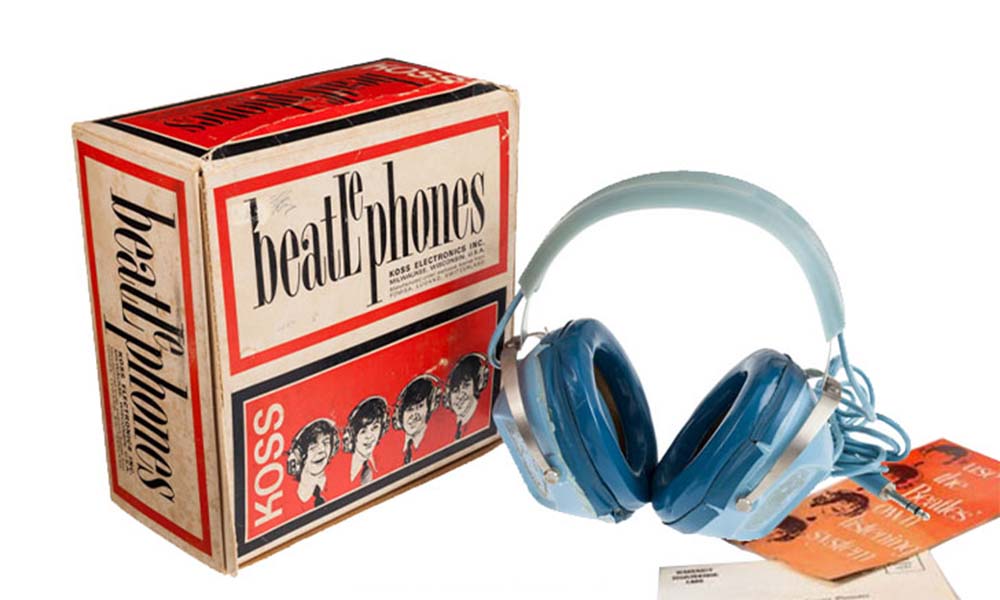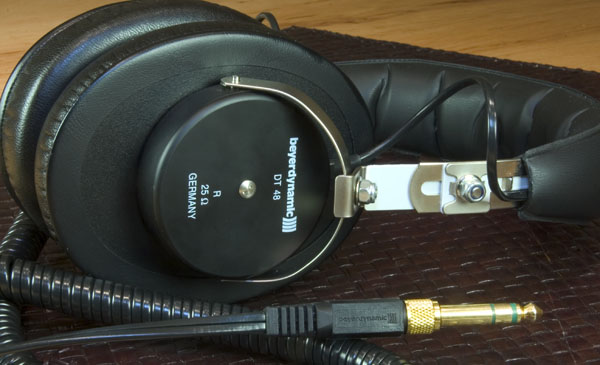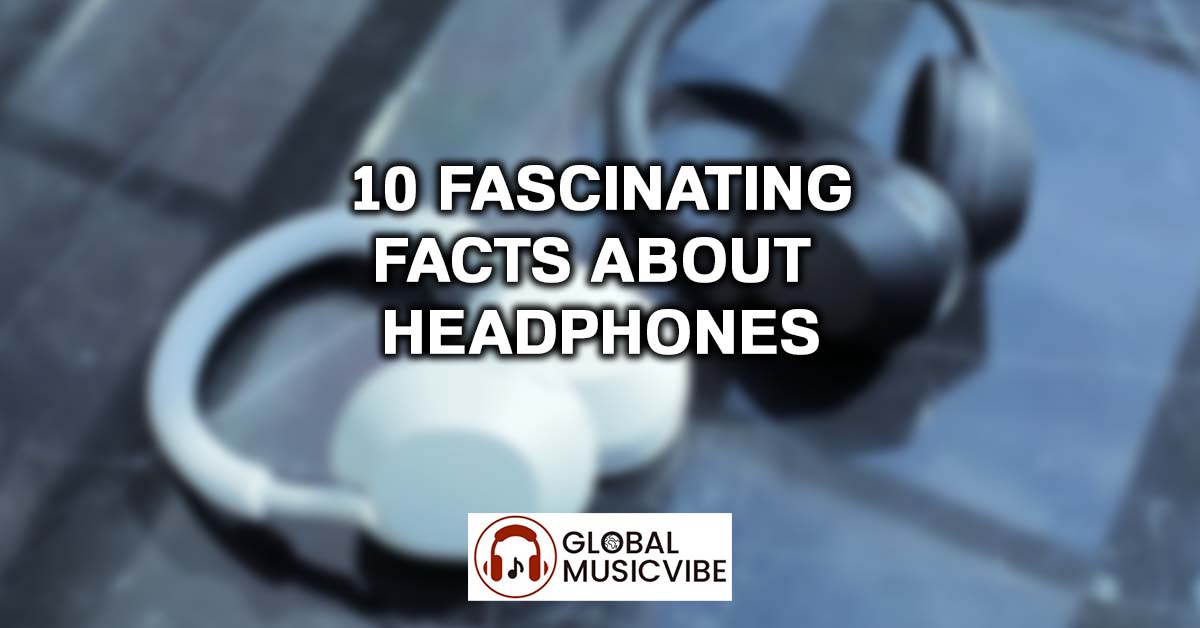Headphones have become an integral part of our daily lives, serving a variety of functions. For some, they’re a fashion statement, while for others, they offer a sanctuary from the outside world. However, the world of headphones is full of fascinating history and innovations that often go unnoticed. In this article, we explore 10 captivating facts about headphones, from their early origins to modern-day marvels.
1. The Birth of the First Headphones
The concept of headphones dates back to the late 19th century. They were initially used by telephone operators, featuring a single earpiece and a mouthpiece for transmission. These early headphones were connected to a cumbersome contraption that weighed between 6 to 11 pounds. It’s astonishing to see how far headphone technology has come since then.
2. Homemade Beginnings of Modern Headphones

In an unlikely turn of events, Nathaniel Baldwin crafted the first modern headphones with two earpieces and a headband in his kitchen. These headphones were initially sold to the U.S. Navy as radio equipment but had limited production due to their kitchen-based assembly. The collaboration with the Wireless Specialty Apparatus Co in Utah eventually led to mass production, marking a unique chapter in headphone history.
3. The Origin of the Term “Cans”
Enthusiasts and audio professionals occasionally refer to headphones as “cans.” This term’s origins can be traced back to slang used in the past to describe earpieces or any sound-producing devices that had to be placed near the ears for listening.
4. Beatlephone: Music Legends and Headphones

Before the era of Dr. Dre’s Beats headphones, there were the Koss Beatlephones. John C. Koss, known as the father of stereo headphones, was not just an inventor but also a brilliant marketer. He capitalized on celebrity endorsements and partnered with renowned stars of the ’60s and ’70s to create the Beatlephone, a must-have for Beatles enthusiasts.
5. Headphones Were Not Meant to Be Portable
In the 1970s, headphones were designed primarily for home listening to records. Portability was not a priority for manufacturers, and early headphones could weigh up to 1 to 2 kilograms. Today, we have lightweight options like Beats headphones, which weigh just 215 grams. The transition to portable headphones came with the introduction of the Sony Walkman, a game-changer in headphone history.
6. The Birth of Noise-Cancellation Technology
Dr. Amar Bose, the founder of Bose Corporation, experienced a frustrating encounter with noisy airplane engines during a flight from Zurich. This led him to conceptualize noise-canceling headphones. Initially, this technology was designed for the aviation industry, addressing the issue of excessive cockpit noise caused by the removal of insulation to reduce aircraft weight. This innovation ultimately led to the iconic Bose QuietComfort series.
7. The First Professional Headphones: Beyerdynamic DT-48

Introduced in 1937, the Beyerdynamic DT-48 was the first dynamic headphones designed for professional use. These headphones played a significant role in World War II communications and remained in production until 2012, earning a spot in headphone history as one of the longest-produced models.
8. Apple iPod’s Influence on Earbuds and IEMs
The introduction of the Apple iPod in 2001 revolutionized portable music consumption and popularized earbuds as a lightweight alternative to traditional over-ear headphones. In-ear monitors (IEMs), initially used by musicians for on-stage monitoring, eventually made their way into the consumer market, offering enhanced noise isolation and sound quality.
9. The Intriguing Journey of Wireless Headphones
Wireless headphones have become a modern sensation. The technology, known as Bluetooth, was named after Harald “Bluetooth” Gormsson, a Viking king famous for uniting Denmark and parts of Norway. The technology aims to unite various devices, much like the king united different tribes, through wireless communication.
10. Headphones in Space
Headphones have even ventured into space! Astronauts aboard the International Space Station use specially designed headphones to communicate with mission control. These space-grade headphones are essential for clear and efficient communication in the unique conditions of space.
Frequently Asked Questions
Are Expensive Headphones Always Better in Terms of Sound Quality?
Answer: Not necessarily. While high-end headphones often offer exceptional sound quality and premium features, the correlation between price and sound quality isn’t linear. Your personal preferences, the type of music you listen to, and the intended use (e.g., studio monitoring, casual listening, gaming) play a significant role. It’s essential to consider your specific needs and test headphones before making a purchase.
What’s the Difference Between Noise-Canceling and Noise-Isolating Headphones?
Noise-canceling headphones actively reduce external noise by using microphones and advanced technology to produce anti-noise signals. Noise-isolating headphones, on the other hand, create a physical barrier to block out external sounds. Both have their merits, with noise-canceling headphones excelling in environments with continuous noise, while noise-isolating headphones are more effective against ambient sounds.
How Can I Extend the Lifespan of My Headphones?
To prolong the life of your headphones, follow these tips:
- Store them in a protective case when not in use.
- Avoid exposing them to extreme temperatures and humidity.
- Regularly clean ear cushions and headphone surfaces.
- Gently unplug the cable rather than yanking it out.
- Don’t over-extend the headband or put excessive pressure on the ear cups.
- Replace ear pads or cushions when they show signs of wear.
Can I Use Headphones While Exercising or Running?
Yes, there are headphones designed specifically for sports and fitness activities. Look for sweat-resistant or waterproof models that provide a secure fit to stay in place during exercise. Some even offer features like bone conduction technology, allowing you to hear ambient sounds for safety. Be sure to choose headphones that suit your specific workout routine.
What’s the Future of Headphone Technology?
The future of headphone technology looks promising. We can expect further advancements in wireless connectivity, battery life, and integration with augmented reality (AR) and virtual reality (VR) platforms. Smart features like voice assistants, health monitoring, and customization are likely to become more prevalent, enhancing the overall listening experience.
You may also like: 20 Best Pop Songs from 2020 (Greatest Hits)
Conclusion: Celebrating the World of Headphones
In this exploration of the world of headphones, we’ve journeyed from the single-earpiece devices of the 19th century to the cutting-edge audio technology of today. We’ve discovered the origins of “cans,” marveled at the impact of the iPod on earbuds and in-ear monitors, and even ventured into the realm of noise-canceling headphones.
Whether you’re a casual listener, a professional musician, or a frequent traveler, headphones have become an indispensable part of your life. The history of headphones reflects not only technological progress but also the influence of culture, music, and even aviation. As headphones continue to evolve, their future promises to be as intriguing as their past.
When you put on your headphones to enjoy music, immerse in a movie, or block out the world for a moment of tranquility, remember the incredible journey that has made this possible. Headphones are more than just audio devices; they’re a testament to human creativity and innovation. So, keep listening, keep exploring, and stay tuned for the exciting developments that lie ahead in the world of headphones.

